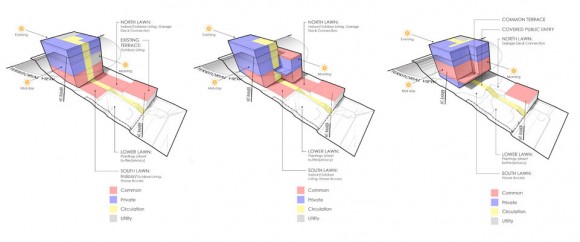
[Image by BUILD LLC]
Having been involved in residential architecture for decades now, we’ve become increasingly interested in the similarities between the houses we complete. While the design work that we perform for single family clients produces unique results specific to each client’s program and goals, we’ve noticed some important common threads. Recognizing these shared characteristics led to our Case Study House series, which started back in 2012 and continues today with the Case Study House 2016. What is significant about this division of our design work is that it’s just as much about designing systems as it is about designing houses.

At the root of a person’s lifestyle, most individuals have similar expectations around the function and enjoyment of the built-environment. Along with this, some qualities simply add more value to one’s daily experience than others. These qualities could be as simple as waking up to generous amounts of daylight, or access to fresh air and natural ventilation. And they may extend well beyond design alone, perhaps involving proximity to a local coffee shop, or the organization of common areas allowing neighbors to socialize, while maintaining day-to-day privacy. They aren’t necessarily always designed and drawn, but they are most likely orchestrated by someone at some point. Understanding these lifestyle expectations and recognizing the lifestyle patterns is the first step in designing systems.
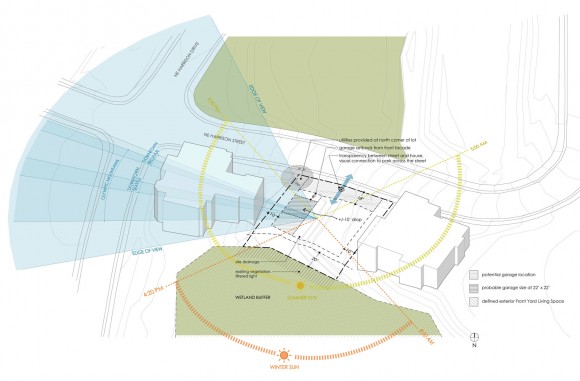
Today’s post identifies 5 of the most important lifestyle patterns that we have observed in the housing work that we do. With each pattern, we take a deep dive, working through the translation from pattern to design tenet to architectural implementation. Because we’re urban dwellers, architects, and thinkers ourselves, we tend to focus most intensely on the situation we know best: the city. While most housing, be it suburban or rural, may share similar lifestyle patterns, this list holds the denser, more urban areas, at the nucleus of the design process. It is these patterns that form the basis of the work we do in our Case Study Houses.
Connectivity & Community
Whether or not people connect with others on a daily basis or get involved in the community, most individuals appreciate that the opportunity exists. Whether or not the opportunity exists depends, in large part, on the built-in strategies of a design. For this reason, the Case Study Houses all implement open common areas with kitchens that have a direct relationship with the dining room and living space. This fosters an atmosphere of casual entertaining where the cooking and eating coalesce. Multi-family projects include exterior areas that can easily be transformed into spaces for community gathering and entertaining. Most interesting is that both strategies typically involve the careful, and quite deliberate, elimination of architectural features (walls, doors, obstructions, etc.)
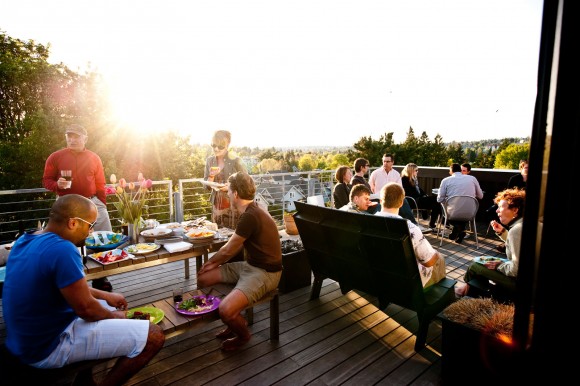
[Photo by Chase Jarvis]
Safety & Security
While privacy locks, security codes, call boxes, and gates may seem like obvious security measures for urban living, the real strategy pertains to how these features can be implemented elegantly. Good residential design should be welcoming to guests, but discouraging to intruders. The base-line requirement is a visually minimal, but highly effective hardware package. When it comes to more substantial security features, like gates, we like to integrate them into a project from the start – they should be aesthetically congruent when open, as well as look natural to the project when secured.
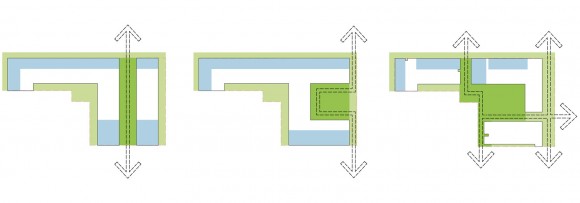
In addition to the security at a point of entry, the most successful security strategies often involve designing in natural surveillance. This might include the placement of windows to keep eyes on an entrance, or positioning neighboring structures for easy observation of access points. When conditions allow, it’s ideal to include other uses, such as active businesses, for informal surveillance of an area. The important factor here is that the security is being provided as a natural course of people’s daily habits. A door in clear view of a busy café, for instance, is less likely to be compromised than one down a lonely alley. Without even knowing it, the café’s patrons become ambassadors of security.
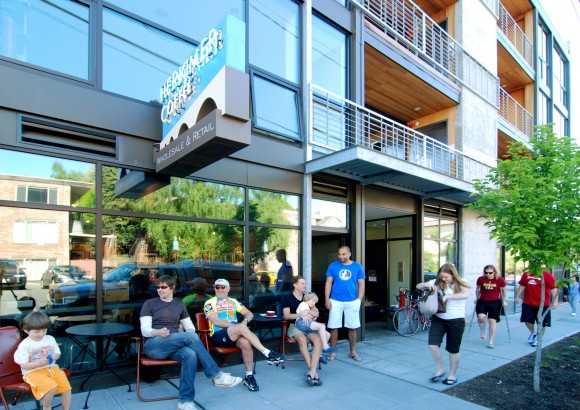
Usefulness & Functionality
The scarcity of land in most urban areas, paired with the escalating costs of construction, means that new architecture needs to be smarter. It needs to achieve a high level of function within a smaller footprint, all without compromising the lifestyle within. There are a handful of very useful tools that we’ve developed over the years which create extremely functional homes without adding square footage or excessive costs. One of the most important design strategies is the reverse floor plan, where the common areas are located on the top floor of the structure to optimize daylight and potential view. We’ve also found it crucial to break down architecture scientifically and figure out the basic building blocks essential to a useful home. Reviewing a year’s worth of past projects allowed us to hone in on the most sensible dimensions of household functions.
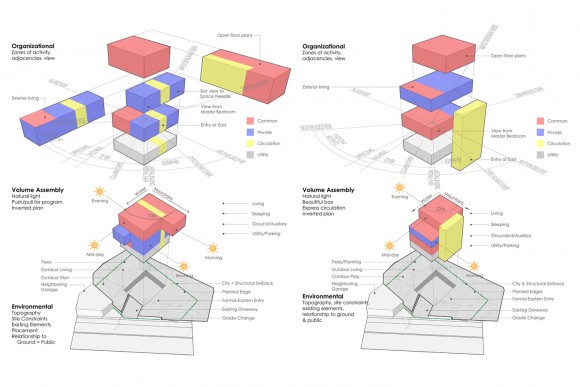
Honesty & Authenticity
An important part of developing a design system around lifestyle authenticity is distinguishing how people live in their fantasy lives versus how they actually live in their real lives. Creating honest housing for the present time typically means eliminating the impractical embellishments from bygone eras. For instance, the square footage consumed by an awkward grand entry with double doors can easily be substituted with a simple, practical entry along with an adjacent mudroom for storing all the daily gear of modern life. Similarly, the area requirements of a separate, formal (and rarely used) dining room can be reduced by simply extending dining off of an open kitchen. The same holds true for features within the mass-produced home. The jacuzzi in the master bathroom, the grand staircase, and the bonus room are an unnecessary use of square footage and construction dollars. They appeal to a fantasy, but fail to deliver on the practicalities of the modern lifestyle.
Authentic design systems also take the weathering process of natural materials into consideration. This architecture of honesty may use certain materials precisely for their ability to patina and tell a story over time. Nature has already done much of the hard work making materials beautiful and interesting. Good design embraces these natural characteristics.
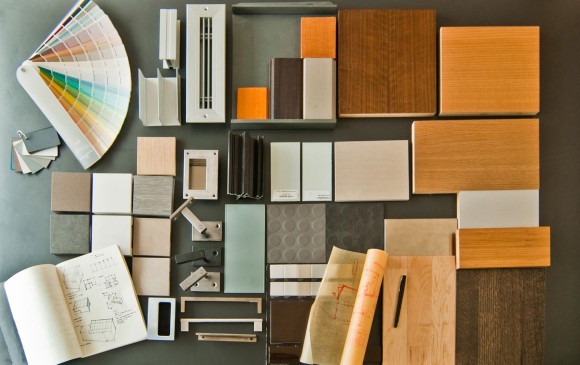
Adaptability & Relevance
Systems of adaptability avoid over-customization and instead include design principles that will be relevant for generations to come. There’s an abundance of effort around sustainability in today’s architecture world and we find that one of the most environmentally-sound methods of design is to create architecture that lasts. This includes room proportions that can lend to a variety of uses or an exterior skin that doesn’t fall out of fashion. Implementing highly adaptable systems, relevant to a broad spectrum of lifestyles and eras, not only respects the environment but also benefits the resale value.
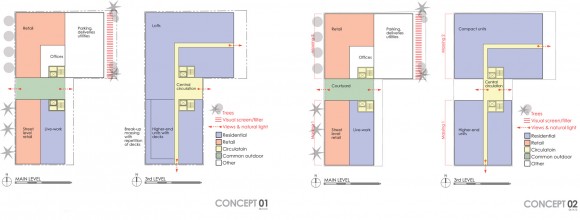
These 5 patterns not only result in the building blocks of the Case Study House projects, but, over time, they establish a method of designing. By identifying lifestyle patterns and responding with architectural systems, the design process is much more effective and clear. Each house builds on the last, further enhancing the systems while putting new ideas to the test. Most importantly, this research and development is leading to a more efficient design process with more advanced results.
Cheers from Team BUILD





